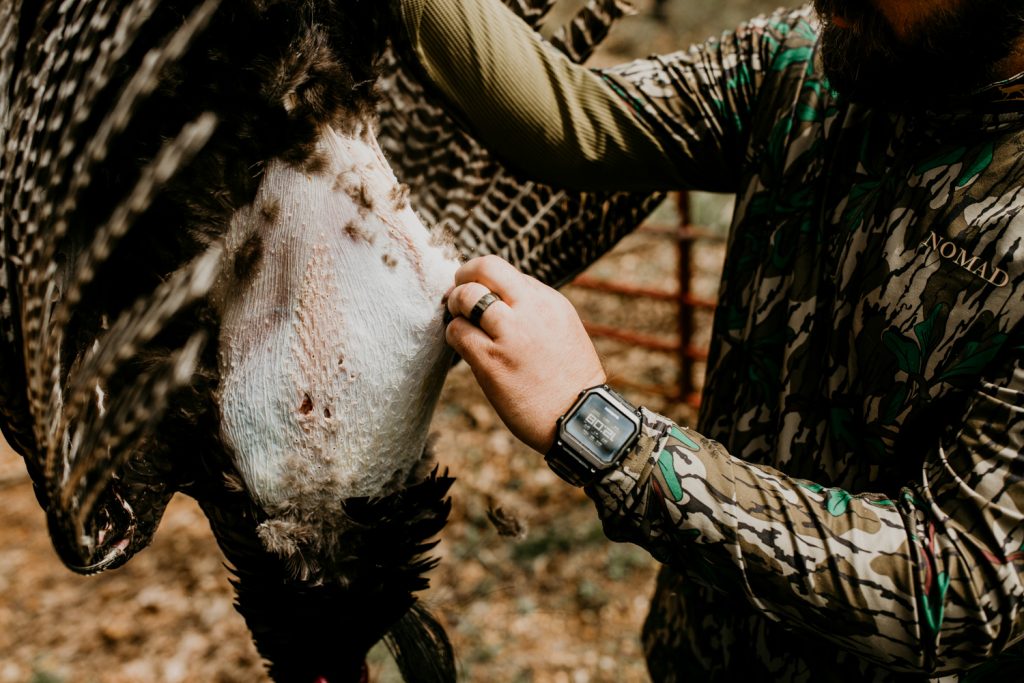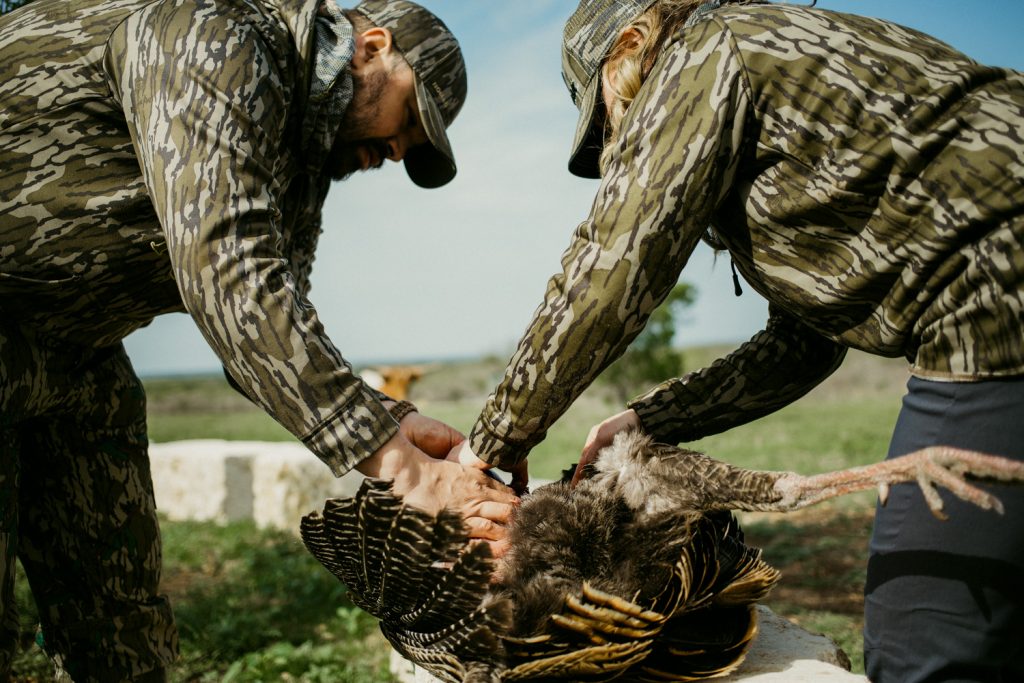Cleaning Your Wild Turkey
Whether plucked, skinned or quartered, there is more than one way to prepare your wild harvest for the table.
If you're a turkey hunter, you're used to making decisions. And, after choosing the right turkey loads, camouflage, decoys and calls before entering the woods, it's a relief when the final decision of the hunt is how to care for and cook your bird.

Plucking
Considered the traditional style of cleaning a wild turkey, plucking is a perfect way to prepare your bird to be roasted, smoked or whole deep-fried. Before you remove the entrails or field dress the turkey pluck the turkey's feathers to preserve the skin and keep moisture in the turkey while cooking it whole. Remove the feathers after dipping the bird in hot water. Some people use boiling water but it has been said that 140-degree water is optimal for plucking a bird. After plucking the bird, remove the entrails and was the cavity before cooking. Plucking does take time and produces more of a mess than does skinning; however, the taste of deep-fried or roasted turkey skin is worth the effort.
Skinning
Many of today's turkey hunters prefer skinning to plucking. Skinning a turkey allows you to cook the bird by frying or grilling the pieces of meat. You can skin and fillet the turkey breasts and slice as much meat from the legs and wings as necessary. Make a cut just along one side of the breastbone. Then, it's just a matter of working the skin off the breast halves, down the back and over each of the legs. In some states it's illegal to only fillet the breast out, leaving the rest of the carcass behind. Always check your state's hunt regulations, and make sure your turkey is properly tagged for transportation.
Quartering
Regardless of whether you plan to skin or pluck, cleaning your turkey is the next step. Doing it properly is both quick and easy. Just follow these simple steps.
- If you don't plan to cook your bird whole, start by laying the turkey on its back. Remove just enough breast feathers to expose the skin.
- To remove the breast filets, pull or cut the skin back from the breast. Make cuts along each side of the breastbone as well as on the inside of both wings or the clavicle. To save the wings, peel the skin back and remove the wings from the cavity by cutting through the joint.
- Find the breastbone and make an incision down each side of the breastbone to loosen the breast filet from the bone. Work from the rear of the breast forward, fileting off the breast by pulling the filet and using the knife as needed. Repeat this for the other side of the breast.
- To remove the thigh and leg, cut through the thigh muscle where it attaches to the back. Then grab the thigh or leg and pull up until you can feel the joint pop loose. Keep cutting through the thigh until it comes free from the turkey's body.

Field Dressing
In hot weather hunting conditions, field dressing your bird is a good idea before you clean it for the table. If you decide to field dress your bird, start by placing the turkey on its back. Find the bottom of the breast plate and insert your knife, making a cut to the anal vent. Remove the entrails from this opening and then reach into the cavity to sever the windpipe, heart and lungs. Cool the cavity by placing ice inside the chest.
CONNECT WITH US
National Wild Turkey Federation
770 Augusta Road, Edgefield, SC 29824
(800) 843-6983
National Wild Turkey Federation. All rights reserved.
